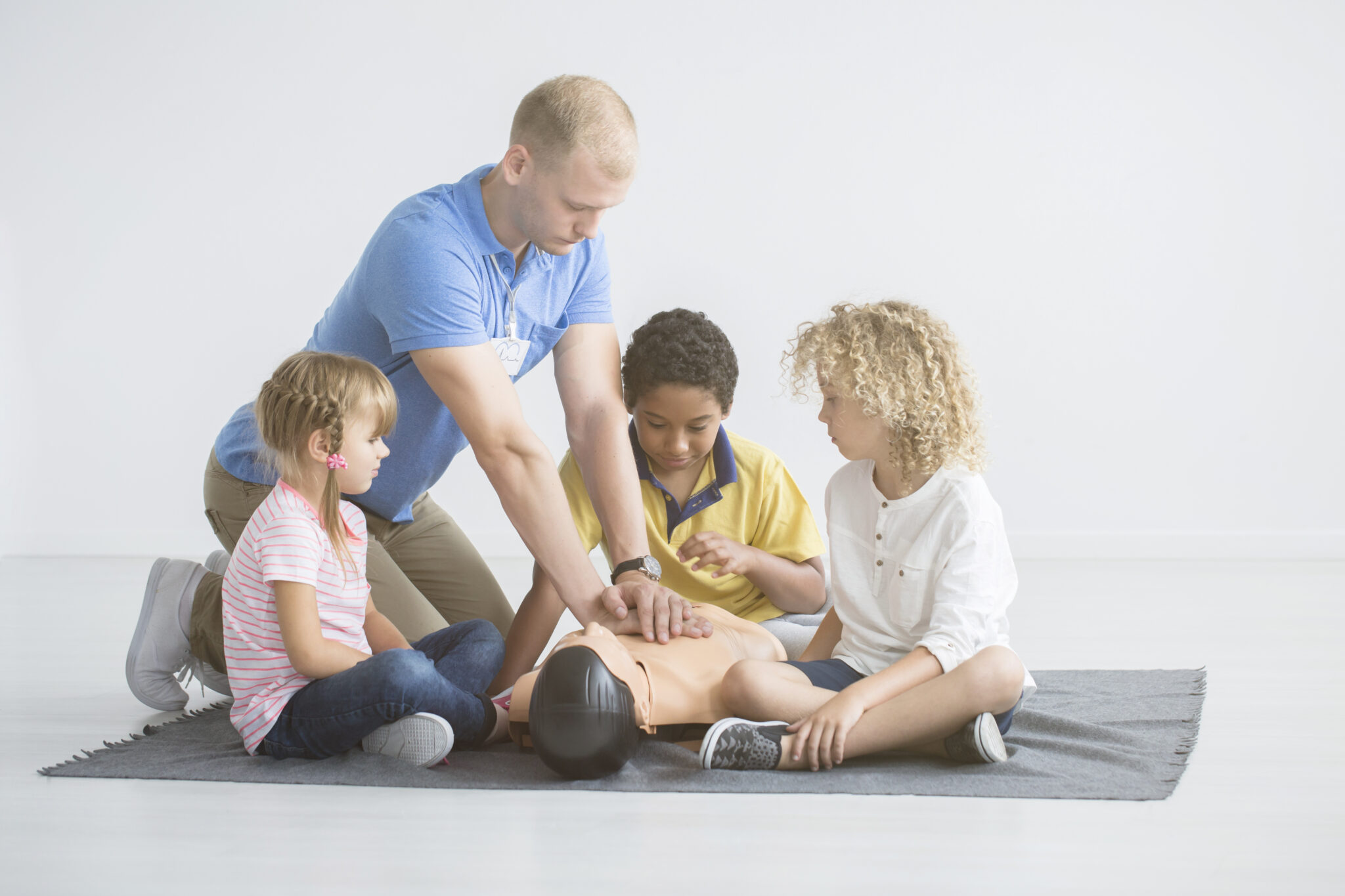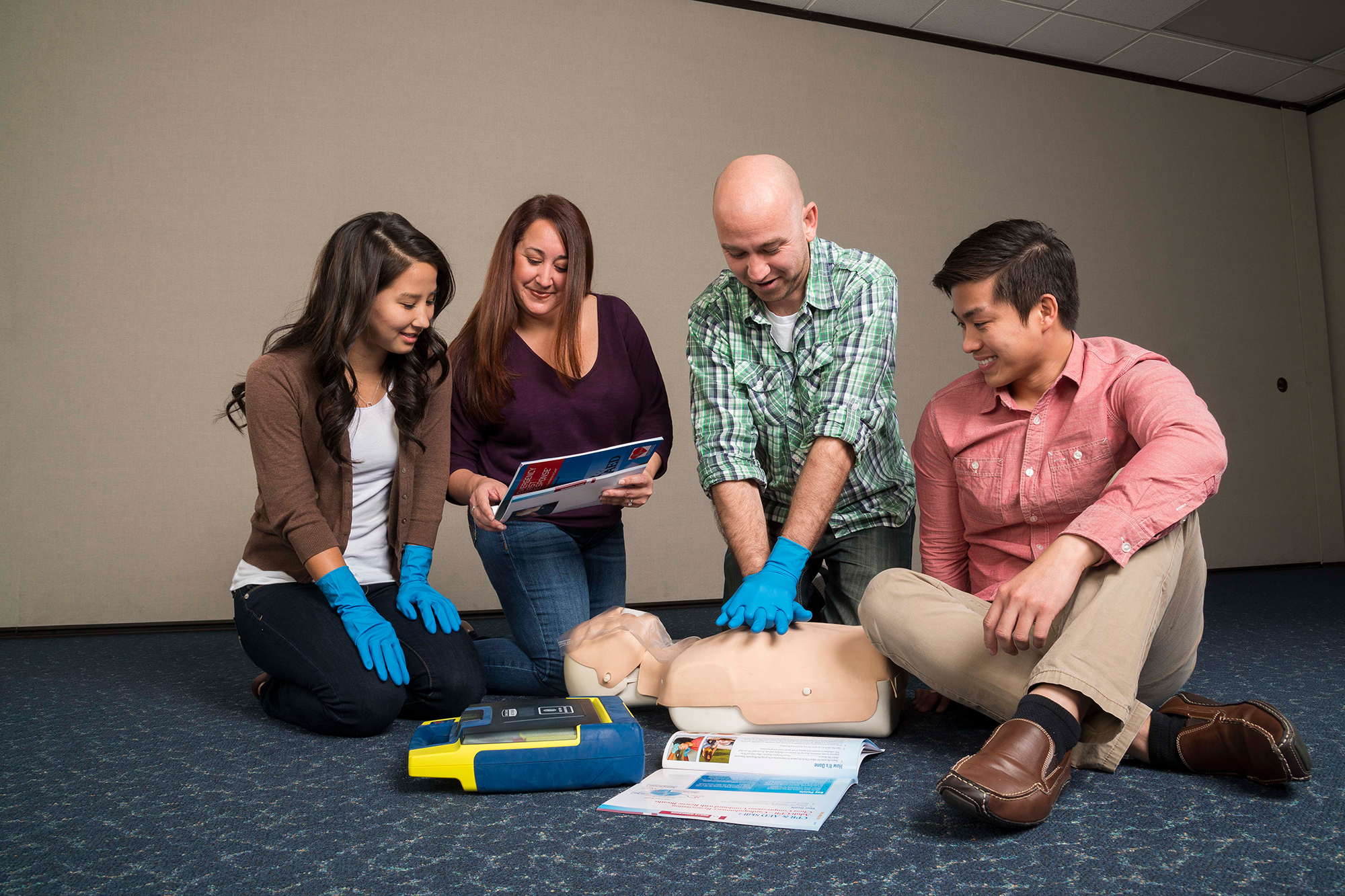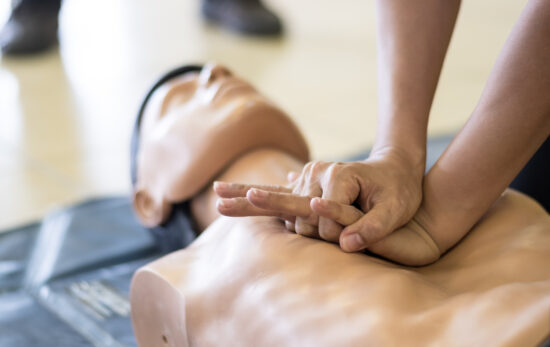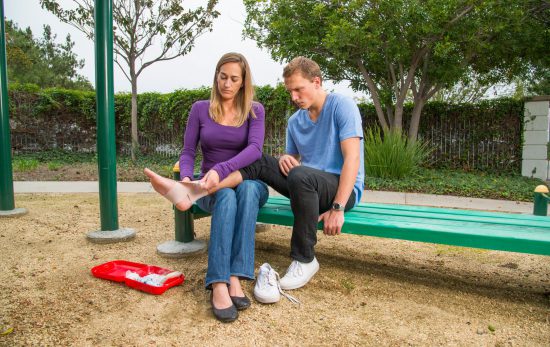According to The Lancet, more than 350,000 people die each year in the United States due to out-of-hospital cardiac arrest. The Lancet also estimates more than 100,000 lives would be saved if more people learned cardiopulmonary resuscitation (CPR) – beginning with school children. So, why should children learn CPR? In countries where CPR education is mandatory in schools, cardiopulmonary resuscitation (CPR) is done in 60–75% of cases, compared to 20-40% elsewhere.
Table of Contents
At What Age Can Children Learn CPR?
A report by ABC News shows 86% of children (ages 9-18) could correctly administer CPR after hands-on training. Although, some of the children lacked the physical strength to perform CPR effectively on an adult, The European Resuscitation Council still recommends that children learn CPR. “It is extremely easy and effective to educate school children in CPR,” the Council indicates. Although it can be taught to younger children, “the optimal age to start teaching cardiac compressions is around 12 years.”
Even if younger children may not have the physical strength to perform chest compressions, it’s still beneficial for them to learn what steps to take in an emergency, including:
- How to recognize signs and symptoms of various emergency conditions
- How to activate emergency services
- Do’s and Don’ts in an emergency situation
There is no minimum age for someone to learn CPR, only recommendations. Studies show that children learn and absorb information faster. Starting CPR knowledge early can become a life saved in the future.
Kids Can Save Lives
For example, here are two inspiring stories of young adults who used their emergency training to make a difference:
– A 13-year-old in Arizona, USA saved the life of his baseball coach by performing CPR.
– A 9-year-old boy saved his little sister with CPR after she fell into a pool.

How to Choose a CPR Class
CPR is a physical skill that needs hands-on practice. Can you imagine learning how to dribble a basketball without ever touching the ball itself? The same goes for learning CPR chest compressions without practicing on a CPR mannequin.
Certainly, choose a CPR course that includes hands-on training with an instructor and adheres to ILCOR (International Liaison Committee on Resuscitation) standards. Likewise, avoid online-only courses where it’s impossible to learn the skills you’ll need to save a life. Learn more about how to choose a CPR certification class.
Become a CPR and First Aid Instructor
The best way to ensure your child and their classmates receive proper training may be to become a CPR instructor yourself. Depending on your experience, you can complete CPR and first aid instructor training in just a few days. Upon completion, you’ll have the confidence to administer and teach CPR and first aid skills to others.
Every day, EFR Instructors help communities prepare for disaster by training community members to respond to medical emergencies when emergency services are unavailable. Our training programs have widespread international acceptance and are backed by more than 50 years of experience in the development and delivery of instructional courses, training materials and educational curricula.

About Emergency First Response© (EFR) Training
The EFR approach to training builds confidence in lay rescuers by teaching life-saving skills in a non-stressful learning environment. Participants are allowed as much practice time as necessary to master each skill by working through realistic scenarios using adult, child and infant CPR mannequins.
Children are the future of the world, no matter how you look at it. The sooner we prepare the next generation, the better off we all will be in the future.



